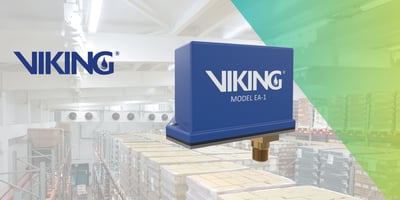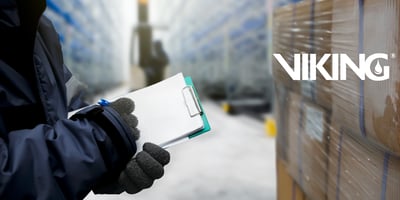In the ever-evolving landscape of fire protection technology, FireFlex Systems stands out for its...
From AFFF to SFFF: Considerations for Modernizing Foam Systems
When considering the transition of a foam-water fire protection system from legacy foams such as Aqueous Film Forming Foam (AFFF) to Synthetic Fluorine Free Foam (SFFF), there are many factors to take into account. Traditional AFFF foams contain intentionally added surfactants that are now resulting in environmental complications. These complications have driven many system owners and insurance providers to seek alternate foam concentrates such as fluorine-free. To transition legacy systems, it must be understood that at this time there are no ‘drop-in’ replacements. Unfortunately, the concentrate cannot simply be "replaced".
 When foam systems are listed, the components are evaluated to ensure their functionality. This means that the listed equipment has been physically tested and deemed acceptable for use with the foam system. It’s essential that components used within the system be listed with the specific concentrate chosen for the project. The specific components, aside from the concentrate, include the proportioning system and the specific discharge device(s). The driving force for this evaluation of the components is to ensure that the concentrate performs as intended. Today, foam concentrates are referred to as SFFF or alcohol-resistive synthetic fluorine-free foam (AR-SFFF). These concentrates have varying viscosities, and this is essential to verify that the proportioners can proportion the foam at the desired rate. This rate of proportioning is typically 3%.
When foam systems are listed, the components are evaluated to ensure their functionality. This means that the listed equipment has been physically tested and deemed acceptable for use with the foam system. It’s essential that components used within the system be listed with the specific concentrate chosen for the project. The specific components, aside from the concentrate, include the proportioning system and the specific discharge device(s). The driving force for this evaluation of the components is to ensure that the concentrate performs as intended. Today, foam concentrates are referred to as SFFF or alcohol-resistive synthetic fluorine-free foam (AR-SFFF). These concentrates have varying viscosities, and this is essential to verify that the proportioners can proportion the foam at the desired rate. This rate of proportioning is typically 3%.
Where bladder tanks are used, it’s vitally important to use tanks that have been evaluated with the specific chosen concentrate. This is to ensure chemical compatibility between the concentrate and the bladder material. With manufacturers using proprietary formulas in their SFFF concentrates, care should be given to using only listed bladder tanks with the specifically chosen concentrate.
The system's discharge devices (sprinklers, nozzles, chambers, and/or makers) are extremely important as they create the finished foam through expansion. The better the expansion ratio and drain time, the higher the quality of foam. Essentially, the more bubbles, the longer the time frame until the foam breaks down. Foams that create a better bubble structure last longer on the fuel and continue to absorb heat and suppress flammable vapors. The type of discharge device directly impacts the rate at which the foam needs to be delivered to the fuel. Each foam manufacturer obtains a specific delivery rate through the listing process for that device. This is referred to as the delivery density or the amount of foam required per square foot. For example, a sprinkler protecting the same fuel as a monitor nozzle, using the same foam concentrate, will have a delivery density that differs. When it comes to SFFF or AR-SFFF, the delivery density must be obtained from the manufacturer.
In many transition projects from legacy foams, the delivery densities increase. This can create an unforeseen issue during the transition process as many systems will require an increased water supply, increased concentrate amounts, larger storage tanks, larger system piping to support the increased discharge density, and likely the replacement of the existing discharge devices to meet SFFF listings.
During the transition process of a foam system, it’s not uncommon for the need to replace bladder tanks, proportioners, and discharge devices to comply with the system's listing. The concentrate itself carries the listing that will outline the compatible equipment. This information can be obtained from Factory Mutual (FM) or Underwriters Laboratory (UL). Additional considerations will need to be given to the concentrate piping components, material, and overall equivalent lengths.




